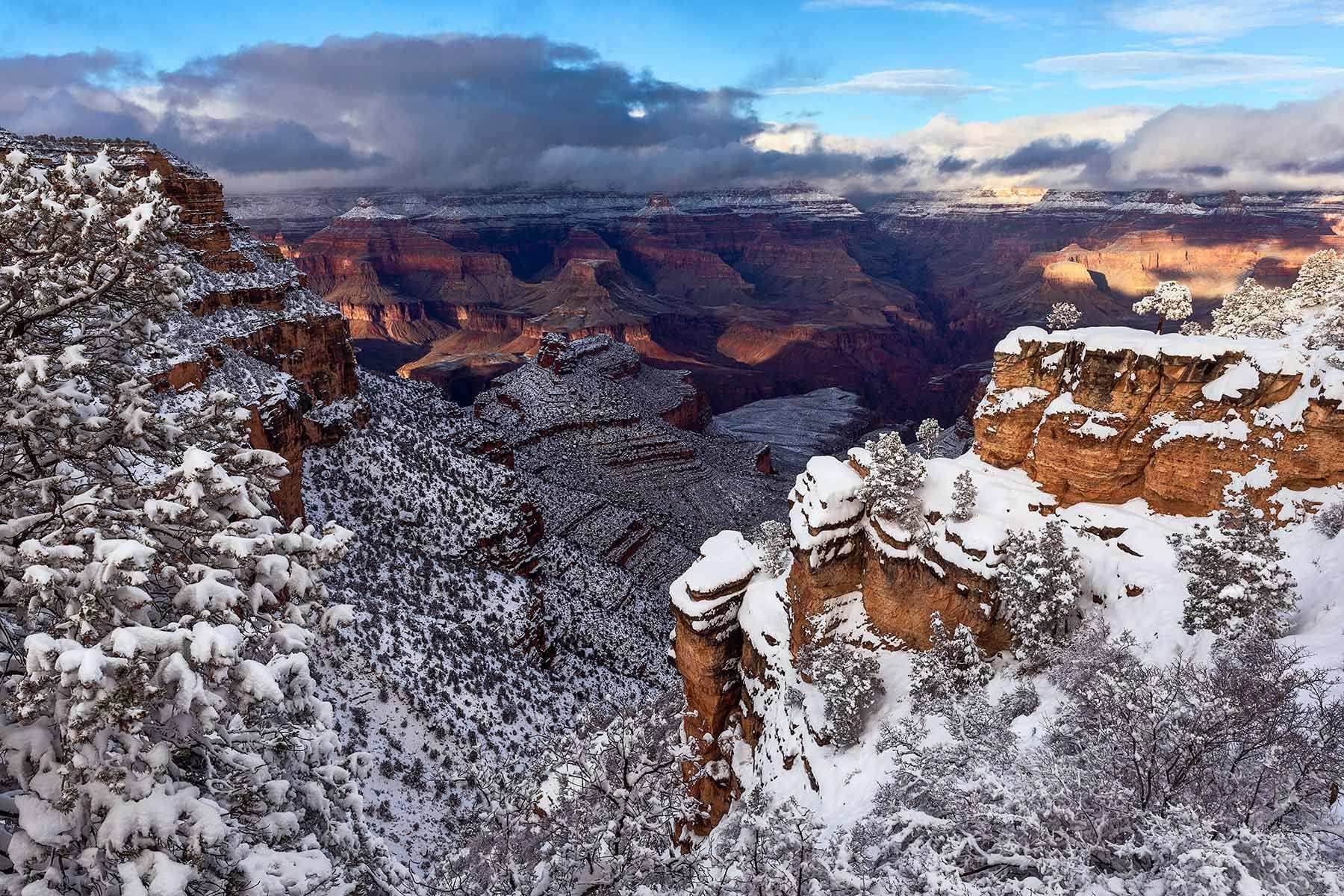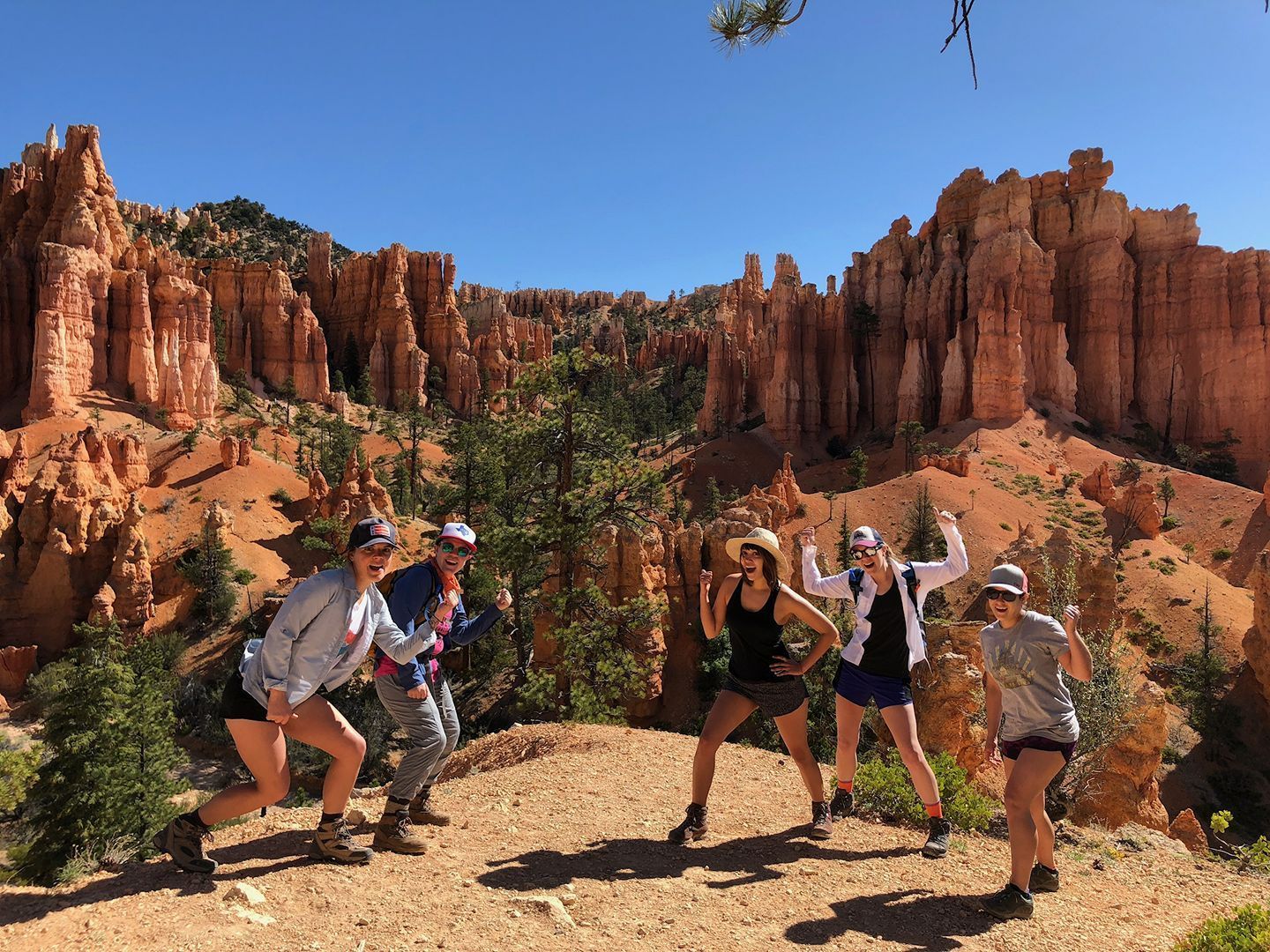How To Prepare for a Hike in Death Valley
Death Valley National Park is a landscape of extremes, offering unparalleled beauty, solitude, and adventure for those willing to brave its challenges. Known for its scorching temperatures, vast salt flats, rugged mountains, and surreal rock formations, it’s a destination that tests both your physical and mental limits. Proper preparation is essential to ensure a safe and rewarding hiking experience in this unique and awe-inspiring environment. Here's your guide to preparing for a hike in Death Valley.
Key Takeaways
- Plan your Death Valley hike during the cooler months — November to March offers the best weather conditions, with manageable daytime temperatures for a safe and enjoyable experience.
- Hydration is non-negotiable — Bring at least one liter of water per hour of hiking to avoid dehydration in the desert’s extreme heat.
- Choose trails that match your experience level — Start with accessible routes like Badwater Basin before tackling challenging hikes such as Telescope Peak.
- Dress and gear up for the desert — Lightweight, moisture-wicking clothing, sturdy boots, sun protection, and navigation tools are essential for comfort and safety.
- Respect Death Valley’s fragile environment — Follow Leave No Trace principles and stick to marked trails to preserve the park’s delicate desert ecosystem.
- Consider guided Death Valley hiking tours — Expert guides enhance safety, share insights on geology and history, and help you fully appreciate the park’s rugged beauty.
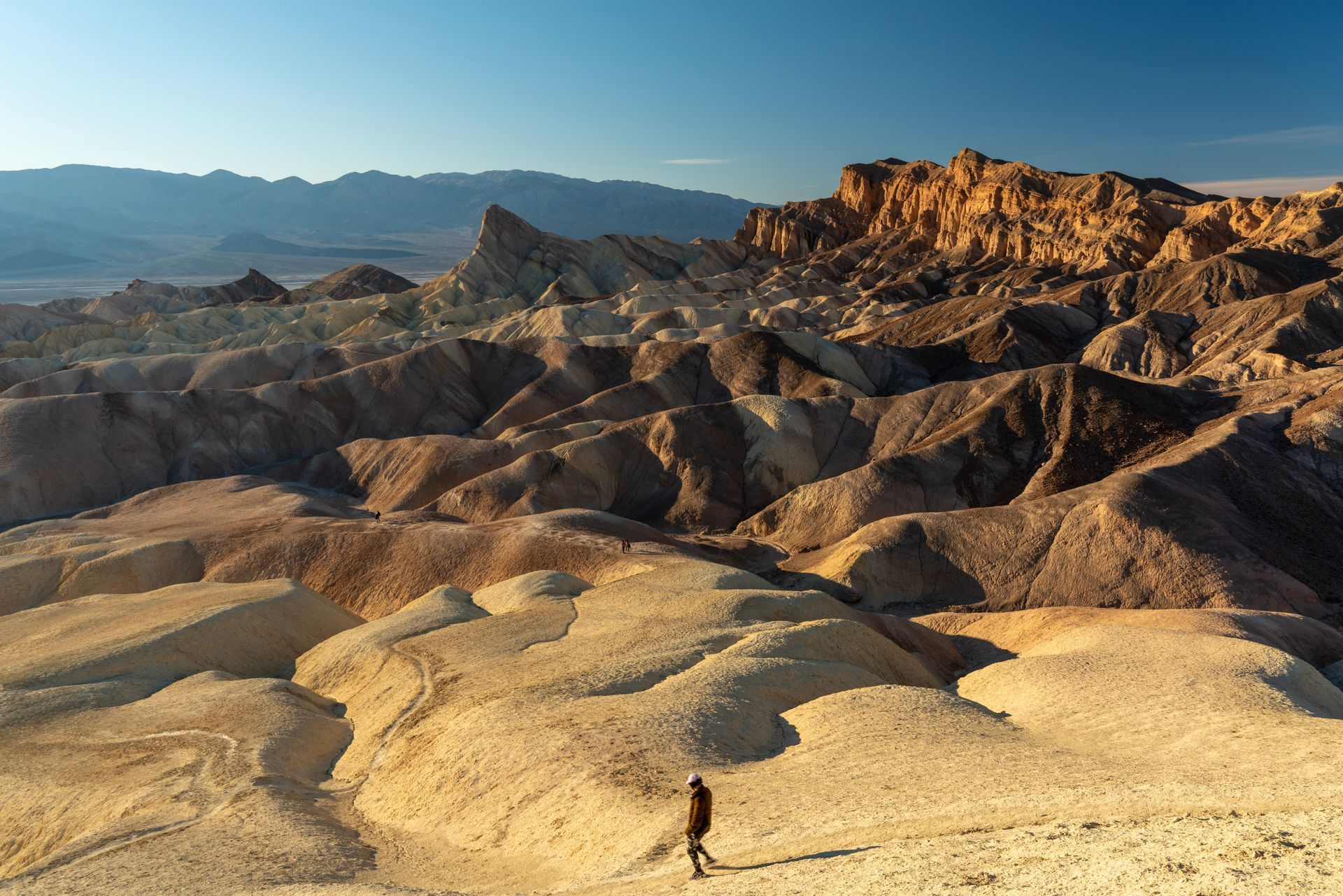
Why Prepare for Death Valley Hiking?
Hiking in Death Valley
isn’t like hiking in a forest or temperate trail. The desert’s harsh environment, with temperatures that can exceed 120°F (49°C) in death valley in summer, combined with its remote and often rugged terrain, requires careful planning and the right gear. Beyond safety, preparation enhances the experience, allowing you to focus on the incredible landscapes and geological wonders that make Death Valley a must-visit for adventurers.
1. Choose the Right Time of Year
The timing of your hike is one of the most critical factors in Death Valley. The best months for hiking Death Valley National Park are late fall through early spring, typically from November to March, when daytime temperatures are milder, ranging between 60°F to 80°F (15°C to 27°C). Avoid hiking in the summer months unless you’re planning early morning or late evening excursions in shaded areas, as the intense heat can quickly become life-threatening.
Winter (November to February)
Visiting Death Valley in December or January can be a serene and rewarding experience. Expect temperatures to range between 40°F to 70°F. Even during the holidays, like Death Valley National Park Christmas, the park remains accessible, but cold nights require warm layers.
Spring (March - May)
Spring brings wildflowers and moderate temperatures. Death Valley in March provides a beautiful setting for hikers. Expect rising temperatures in Death Valley in May, so morning hikes are best. While the Death Valley temperature in April is ideal for long scenic treks.
Summer (June – August)
Expect intense heat with Death Valley June weather, which regularly exceeds 110°F. Only the most experienced hikers with adequate gear should consider hiking in summer.
Fall (September – November)
As temperatures begin to drop, weather in Death Valley in September and October becomes more tolerable. Expect an average temperature in October around 85°F. November is another great time; it usually indicates cooler, comfortable weather.
2. Plan Your Trail
Death Valley offers hikes for all skill levels, from easy walks to challenging backcountry trails. Research and select a trail that matches your fitness level and experience. Some popular hikes include:
- Golden Canyon Death Valley to Gower Gulch Loop: A 4.4-mile moderate trail known for its vibrant canyon walls.
- Badwater Basin Salt Flats: An easy, flat walk across a surreal salt-encrusted landscape, located 282 feet below sea level.
- Telescope Peak: A strenuous 14-mile hike to the park’s highest point, rewarding you with breathtaking panoramic views.
Other exciting routes include Death Valley hiking trails and canyons in Death Valley.
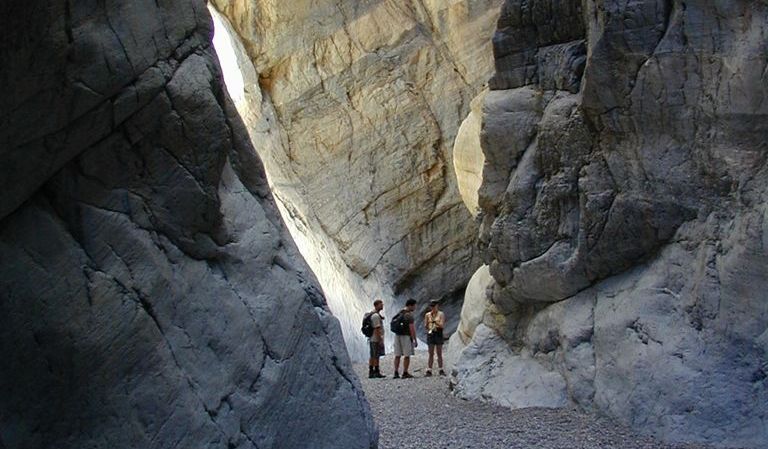
3. Prepare Your Gear
Packing the right gear for a Death Valley adventure is crucial for a safe and comfortable hike! Here’s what you’ll need:
Essentials
- Water: Death Valley’s arid climate can dehydrate you quickly. Bring at least 1 liter per hour of hiking, and carry more for longer or strenuous hikes.
- Food: Pack high-energy snacks like trail mix, energy bars, or dried fruit to keep your energy up.
- Navigation Tools: Bring a map, compass, or GPS device. Cell service is unreliable in most parts of the park.
- Sun Protection: A wide-brimmed hat, sunglasses, sunscreen (SPF 30 or higher), and lightweight, long-sleeved clothing are essential.
- First Aid Kit: Include bandages, blister pads, antiseptic, and any personal medications.
- Lighting: A headlamp or flashlight, even for daytime hikes, in case of delays.
Optional (But Highly Recommended)
- Trekking Poles: For added stability on rocky or uneven terrain.
- Camera: To capture the striking landscapes and colors unique to Death Valley.
- Emergency Gear: A whistle, multi-tool, and emergency blanket for unexpected situations.
4. Dress for Success
The desert sun is relentless, so proper clothing is a key component of your preparation:
- Lightweight, Moisture-Wicking Fabrics: These help regulate body temperature and keep you dry.
- Sturdy Hiking Boots: Comfortable, well-broken-in boots with good traction are a must for rocky trails.
- Layering: Mornings and evenings can be surprisingly chilly, especially in higher elevations like Telescope Peak or Dante’s View.
6. Stay Safe
Safety should always be a priority when hiking in Death Valley:
- Tell Someone Your Plan: Share your itinerary with a friend or family member and include your expected return time.
- Check Weather Conditions: Sudden temperature changes, windstorms, or flash floods can occur. Avoid hiking during extreme weather warnings.
- Know Your Limits: Recognize when to turn back if the trail becomes too difficult or conditions worsen.
7. Respect the Environment
Death Valley’s delicate desert ecosystem is protected, so practice Leave No Trace principles:
- Pack Out All Trash: Including food wrappers, water bottles, and tissues.
- Stick to Trails: Walking off-trail can harm sensitive desert plants and disturb wildlife.
- Avoid Removing Natural Features: Leave rocks, plants, and other natural items as you find them.
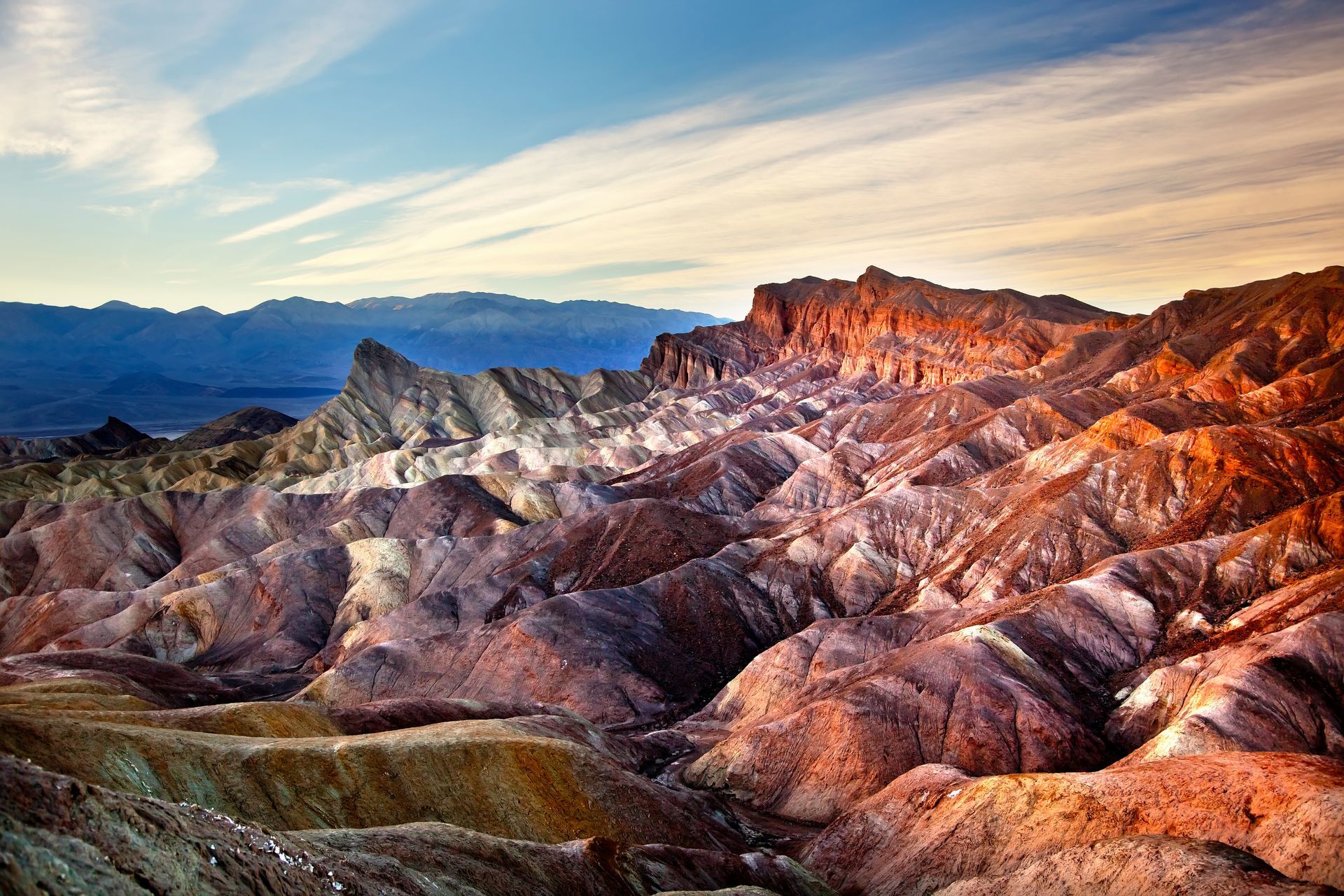
5. Understand the Environment
Death Valley’s landscape is as challenging as it is beautiful. Familiarize yourself with the terrain and potential hazards:
- Heat: Even in cooler months, temperatures can feel intense. Always hydrate and rest in shaded areas when possible.
- Elevation: Some trails, like Telescope Peak, take you to higher altitudes, where the air is thinner and the temperature drops significantly.
- Flora and Fauna: Watch out for spiny desert plants and animals like rattlesnakes. Stay on marked trails to avoid disturbing wildlife or damaging fragile ecosystems.

8. Consider Guided Tours
If you’re new to desert hiking or simply want to make the most of your time in the park, guided tours can offer a safe and enriching way to experience Death Valley. With expert guides handling logistics and sharing stories about the landscape’s geology and history, you’re free to focus on the scenery and the moment.
If you’re looking for a more supportive and community-focused experience, especially as a woman,
this women’s Death Valley hiking trip offers a great mix of adventure, connection, and comfort.
9. Experience the Highlights
Death Valley has countless unique features to explore. Make sure to visit:
- Badwater Basin: The lowest point in North America.
- Golden Canyon: A showcase of colorful geology.
- Dante’s View: A breathtaking panoramic overlook.
- Mesquite Flat Sand Dunes: Iconic dunes perfect for sunrise or sunset photography.
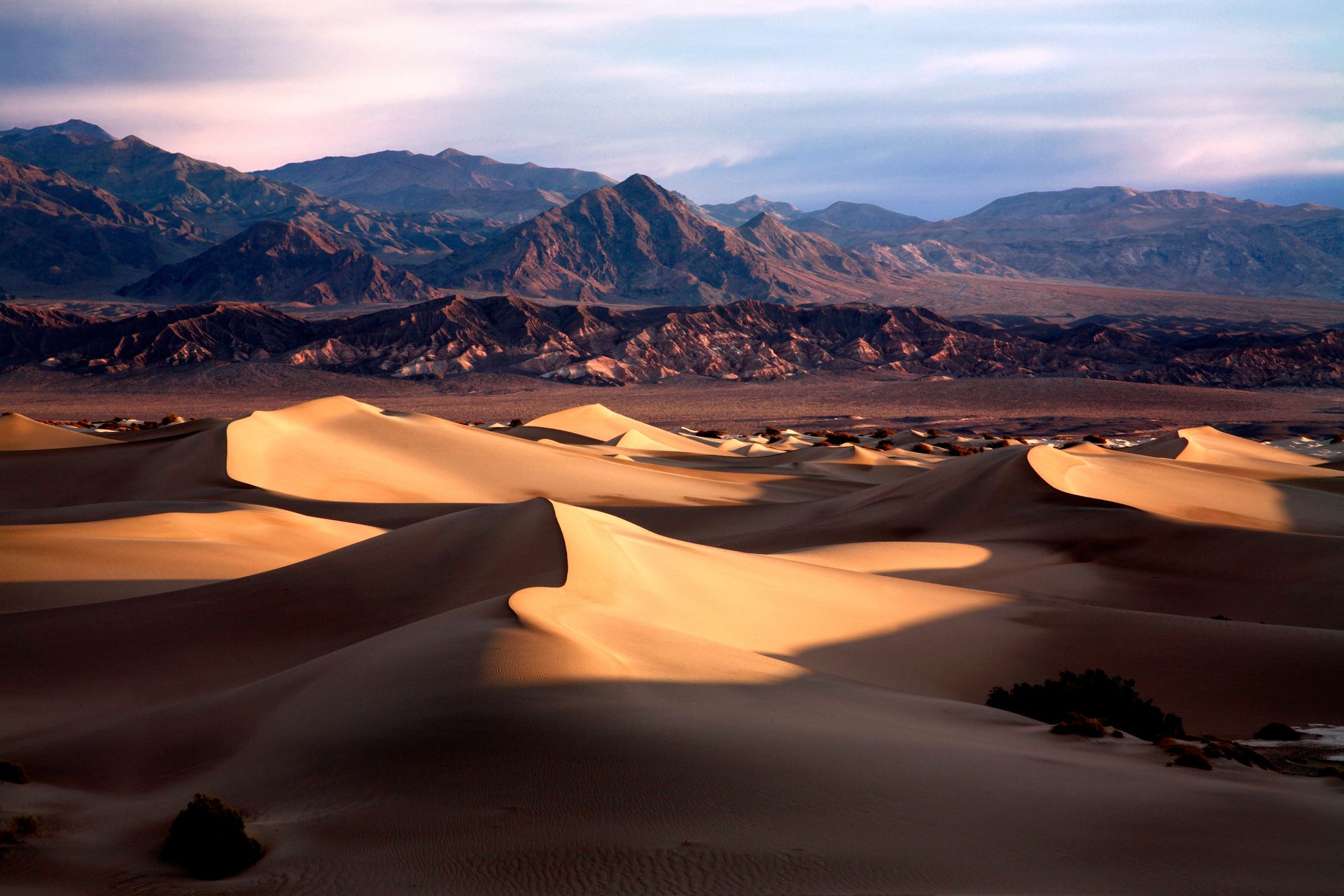
Experienced adventurers might want to try backcountry camping in Death Valley or backpacking. Popular routes for backpacking in Death Valley include rugged trails and difficult hikes across dramatic desert terrain.
Whether you’re doing short walks or longer Death Valley hikes-- this is a hiker’s paradise. If you're heading from Death Valley to Grand Canyon, you can also explore Grand Canyon easy hikes along the way, take a hiking mule tour, or have a customised hiking tour in Death Valley for a unique experience.
Add Mount Baldy to Your Hiking Bucket List
If you're planning more hikes in California, Mount Baldy—also known as Mount San Antonio—is a must.
Why Hike Mount Baldy? Mount Baldy hiking is a thrilling challenge, especially during winter. The Baldy Bowl Trail California is one of the most iconic winter treks for experienced hikers. From the Baldy Bowl trailhead, ascend to the Mount Baldy summit, experiencing incredible views along the way.
Conditions to Know Before You Go
- Mount Baldy weather forecast can be unpredictable. Always check weather in Mount Baldy.
- Mount Baldy elevation reaches 10,064 ft. It's one of the highest peaks in Southern California.
Frequently Asked Questions
Here’s everything you need to know about preparing for a hike in Death Valley National Park — from choosing the right season to staying safe in one of Earth’s most extreme landscapes.
When is the best time to hike in Death Valley?
The best time to hike in Death Valley is from November through March, when temperatures range from 60°F to 80°F (15°C–27°C). Avoid hiking in summer unless it’s early morning or late evening, as temperatures can exceed 120°F (49°C) and pose serious heat risks.
How much water should I bring when hiking in Death Valley?
Bring at least one liter of water per hour of hiking, and carry extra for longer or strenuous trails. The arid desert climate causes rapid dehydration, even during cooler months. Always start hydrated, take breaks in shaded areas, and avoid pushing yourself in peak heat hours.
What should I wear for hiking in Death Valley?
Wear lightweight, moisture-wicking clothing to stay cool and dry. Long sleeves and pants protect against sunburn and brush. A wide-brimmed hat, sunglasses, and sunscreen (SPF 30 or higher) are essential. Sturdy, broken-in hiking boots with good traction help on rocky terrain.
What are the most popular hiking trails in Death Valley?
Top trails include the Golden Canyon to Gower Gulch Loop for colorful canyon walls, Badwater Basin Salt Flats for easy scenic walks, and Telescope Peak for advanced hikers seeking summit views. Each offers a unique perspective of Death Valley’s rugged and surreal landscape.
Is it safe to hike in Death Valley during summer?
Summer hiking is extremely dangerous due to temperatures often exceeding 110°F (43°C). Only highly experienced hikers should attempt short hikes at dawn or dusk, and only with ample water, shade breaks, and safety gear. Most visitors are encouraged to hike in cooler months.
What gear do I need for a Death Valley hike?
Essential items include water, high-energy snacks, navigation tools, sun protection, a first aid kit, and a flashlight or headlamp. Optional but useful items include trekking poles, an emergency blanket, and a whistle. Cell service is unreliable, so plan routes in advance.
How can I stay safe while hiking in Death Valley?
Tell someone your hiking plan, including your route and return time. Check weather forecasts for heat or flash flood warnings. Carry sufficient water, rest often, and turn back if you feel unwell. Avoid hiking alone or during the hottest part of the day.
What should I know about Death Valley’s environment?
Death Valley features extreme heat, elevation changes, and delicate desert ecosystems. Stay on marked trails to protect fragile flora and fauna, avoid touching or removing rocks and plants, and be cautious of wildlife like rattlesnakes. Always respect Leave No Trace principles.
Are guided hikes available in Death Valley?
Yes. Guided hikes and multi-day tours are available and ideal for first-time visitors. Experienced guides handle logistics, provide safety tips, and share insights about the park’s geology, wildlife, and history—making your hike both safer and more enriching.
Can I hike in Death Valley in winter?
Absolutely. Winter offers mild daytime temperatures between 40°F and 70°F, ideal for long hikes. However, nights can be cold, so pack warm layers. Trails remain open, and you’ll experience fewer crowds and clearer skies for stargazing.
What are some must-see spots in Death Valley for hikers?
Don’t miss Badwater Basin, Golden Canyon, Dante’s View, and Mesquite Flat Sand Dunes. These areas showcase Death Valley’s diverse terrain—from salt flats to rugged peaks. For serious hikers, Telescope Peak provides a panoramic view that captures the park’s full grandeur.
Ready to explore?
Hiking in Death Valley is a journey into an extraordinary world where extremes reign and beauty abounds. With careful preparation and respect for the environment, you can safely explore its otherworldly landscapes and create memories that will last a lifetime. Whether you’re marveling at the salt flats of Badwater Basin, navigating the narrow walls of Mosaic Canyon, or summiting Telescope Peak, Death Valley offers an adventure like no other.
Experience the stunning contrasts of Death Valley National Park with Four Season Guides on an exclusive 4-day lodge-based hiking tour!
Don’t just take our word for it—visit our Google Business Profile Reviews to read firsthand accounts of FS Guides' scenic hikes, multi-day backpacking trips, and transformative retreats.
Four Season Guides, 506 N Grant St suite o, Flagstaff, AZ 86004, United States
+19285251552
35.19653980, -111.62000560

